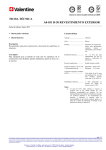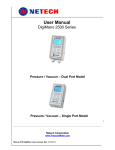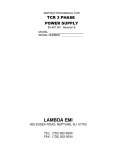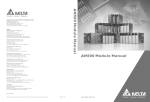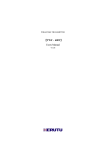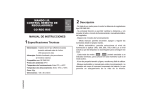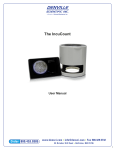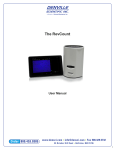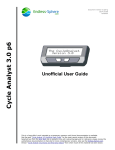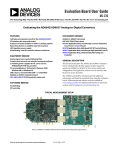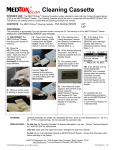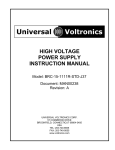Download Electroblotting Systems - Denville Scientific Inc.
Transcript
user manual Electroblotting Systems Complete Electroblotting System for 10 × 10 cm Mini Gels, Cat. No. E4103 Complete Electroblotting System for 20 × 20 cm Standard Gels, Cat. No. E4203 um DNTV100-EBK-IM/Rev. A0/08-11 Contents Safety Warnings and Precautions General Information Packing Lists System Details Using the Denville Electroblotting Units A. Attaching Electrode Leads to the Lid B. Care and Maintenance C. Tank and Cassette Preparation D. Final Assembly and Transfer Ordering Information Warranty Disposal ii 1 2 3 4 4 5 6 7 8 9 10 • pi Safety Warnings and Precautions Important user information Please read this entire manual to fully understand the safe and effective use of this product. The exclamation mark within an equilateral triangle is intended to alert the user to the presence of important operating and maintenance instructions in the literature accompanying the instrument. Should you have any comments on this manual, we will be pleased to receive them at: Denville Scientific, Inc. P.O. Box 4588 Metuchen, NJ 08840-4588 Denville Scientific, Inc. reserves the right to make changes in the specifications without prior notice. When used correctly, these units pose no health risk. However, these units can deliver dangerous levels of electricity and are to be operated only by qualified personnel following the guidelines laid out in this instruction manual. The unit must never be used without the safety lid correctly in position. The unit should not be used if there is any sign of damage to the external tank or lid. These units comply with the statutory CE safety directives: 73/23/EEC: low voltage directive: IEC 1010-1:1990 plus amendment 1:1992 EN 61010-1:1993/BS EN 61010-1:1993 • pii General Information The Denville Electroblotting Systems provide a cost-effective, safe, and easy to use system for the transfer of proteins and nucleic acids from 10 × 10 cm mini and 20 × 20 cm standard gels. Both units are supplied with four asymmetric color-coded cassettes as a unique design feature to prevent them from being inserted into the tank in the wrong orientation, against the direction of transfer. Operational Model Buffer Volume Maximum Voltage E4103 2 L 100 V E4203 6.3 L 200 V • p1 Packing Lists The packing lists should be referred to as soon as the unit is received to ensure that all components have been included. The unit should be checked for damage when received. Be sure to keep all packaging material for damage claims for to use should it become necessary to return the unit. Please contact your supplier if there are any problems or missing items. Complete Electroblotting System for 10 × 10 cm Mini Gels Package includes: Cooled tank, lid, a black cable, a red cable, 4× electroblotting cassettes, and 8× fiber pads. Complete Electroblotting System for 20 × 20 cm Standard Gels Package includes: Cooled tank, lid, a black cable, a red cable, 4× electroblotting cassettes, and 8× fiber pads. • p2 System Details Usage guidance and restrictions • Maximum altitude 2000 m. • Temperature range between 4 °C and 60 °C. • Maximum relative humidity 80% for temperatures up to 31 °C decreasing linearly to 50% relative humidity at 40 °C. • Not for outdoor use. This apparatus is rated POLLUTION DEGREE 2 in accordance with IEC 664. POLLUTION DEGREE 2, states that: “Normally only non-conductive pollution occurs. Occasionally, however, a temporary conductivity caused by condensation must be expected”. • p3 Using the Denville Electroblotting Units A. Attaching Electrode Leads to the Lid 1 Note the position of the lid on the unit. This shows the correct polarity and the correct orientation of the cables, black is negative and red is positive. 2 Remove the lid from the unit. Note if the lid is not removed, fitting the cables may loosen the gold plug and cause damage to the electrode. 3 Screw the cables into the tapped holes as fully as possible so that there is no gap between the lid and the leading edge of the cable fitting. 4 • p4 Refit the lid. B. Care and Maintenance Units are best cleaned using warm water and a mild detergent. Water at temperatures above 60 °C can cause damage to the unit and components. The units should not be left in detergents for more than 30 minutes. The tank should be thoroughly rinsed with warm water and distilled water to prevent build up of salts but care should be taken not to damage the electrode. Vigorous cleaning is not necessary or advised. Air drying is recommended before use. Caution! The units should never come into contact with the following cleaning agents, these will cause irreversible and cumulative damage: Acetone, Phenol, Chloroform, Carbon tetrachloride, Methanol, Ethanol, Isopropyl alcohol, Alkalis. Caution! DEPC is a suspected carcinogen. Always wear gloves and safety glasses. • p5 C. Tank and Cassette Preparation 1 Prepare the appropriate amount of transfer buffer (see General Information, page 1). 2 Fill the tank halfway with transfer buffer. 3 Connect the cooling water supply to the tank base hose connectors. Use hose clips to secure the tubing. 4 Add a magnetic stir bar to the tank to maintain uniform temperature and conductivity during electrophoretic transfer. Note: Use gloves when handling the compression cassette components. 5 Pre-wet nitrocellulose or nylon membranes with distilled water. Pre-wet PVDF membranes in methanol. Then soak all membrane types in transfer buffer. 6 Familiarize yourself with the interlocking hinge of the compression cassette. 7 Place the open cassette in a tray filled with transfer buffer so that molecules will migrate toward the membrane (see Figure 1). For negatively charged macromolecules (nucleic acids and most proteins) build the transfer stack on the red half of the cassette. 8 Place a fiber pad on the red half of the transfer cassette and press until all air is expelled. 9 Place a sheet of blotting paper on the fiber pad and then place the membrane on the blotting paper. 10 Place the gel — which contains a sample that has been electrophoretically separated and equilibrated (if required) with transfer buffer — on the membrane. 11 Use a clean glass rod soaked in transfer buffer to roll out any trapped bubbles between the membrane and gel. 12 Cover the gel with a sheet of blotting paper and then a second fiber pad, again pressing to gently expel any trapped air. 13 Close the cassette and slide the clamping clip into place. • p6 Compression cassette Figure 1. Cassette Assembly. Compression cassette Fiber pad Fiber pad Blotting paper Blotting paper Gel Membrane Direction of transfer D. Final Assembly and Transfer 1 Insert the cassette into one of the tank slots with the transfer membrane facing the positive side of the tank. Repeat for all cassettes being used for transfer. 2 Add additional transfer buffer to the tank to reach the max fill line. 3 Place the lid onto the tank and connect the leads to a power supply. 4 Set the voltage and current to suit the transfer application. • p7 Ordering Information Product Complete Electroblotting System for 10 × 10 cm Mini Gels Replacement parts and accessories: Hinged 10 × 10 cm cassette with 2 fiber pads 10 × 10 cm fiber pads, pkg/4 Complete Electroblotting System for 20 × 20 cm Standard Gels Replacement parts and accessories: Hinged 20 × 20 cm cassette with 2 fiber pads 20 × 20 cm fiber pads, pkg/4 • p8 Cat. No. E4103 E4136 E4137 E4203 E4236 E4237 Warranty Denville warrants that the unit you have received has been thoroughly tested and meets its published specification. This unit (excluding all accessories) is warranted against defective material and workmanship for a period of twelve (12) months from the date of shipment ex factory. Denville will repair all defective equipment returned during the warranty period without charge, provided the equipment has been used under normal laboratory conditions and in accordance with the operating limitations and maintenance procedures outlined in this instruction manual and when not having been subject to accident, alteration, misuse or abuse. No liability is accepted for loss or damage arising from the incorrect use of this unit. Denville’s liability is limited to the repair or replacement of the unit or refund of the purchase price, at Denville’s option. Denville is not liable for any consequential damages. Denville reserves the right to alter the specification of its products without prior notice. This will enable us to implement developments as soon as they arise. Denville’s products are for research use only. A return authorization must be obtained from Denville before returning any product for warranty repair on a freightprepaid basis. • p9 Disposal T his equipment is marked with the crossed out wheeled bin symbol to indicate that it must not be disposed of with unsorted waste. Instead it is your responsibility to dispose of your equipment correctly at lifecycle-end by handing it over to an authorized facility for separate collection and recycling. It is also your responsibility to decontaminate the equipment in case of biological, chemical and/or radiological contamination, so that the persons involved in the disposal and recycling of the equipment are protected from any potential hazard. For further information about where you can drop off your waste equipment, please contact your local Denville representative. By doing so, you will help to conserve natural and environmental resources and you will ensure that your equipment is recycled in a manner that protects human health. Thank you • p10 Denville Scientific, Inc. P.O. Box 4588 Metuchen, NJ 08840-4588 Toll Free: 1-800-453-0385 Phone: 1-908-757-7577 Fax: 1-908-757-7551 Email: [email protected] Web: www.densci.com © 2011 Denville Scientific, Inc. All rights reserved. Printed in the USA. • p11














